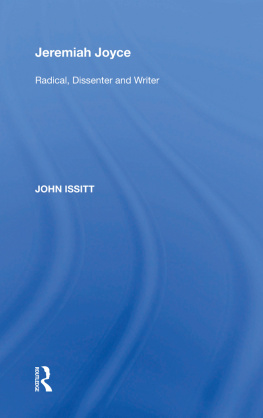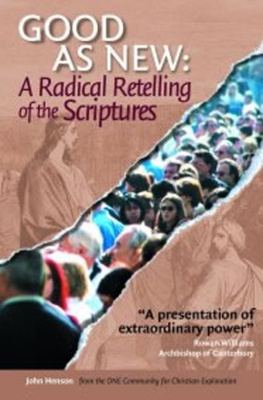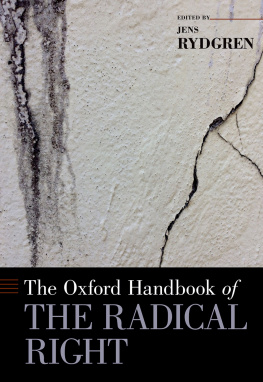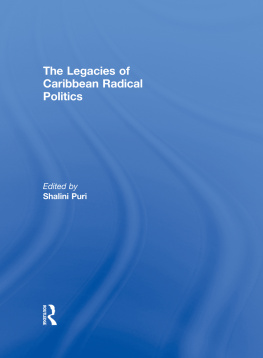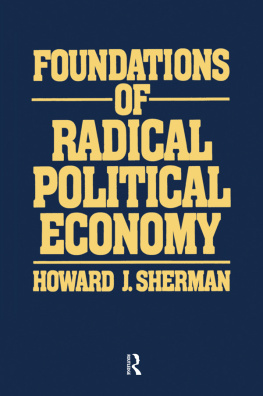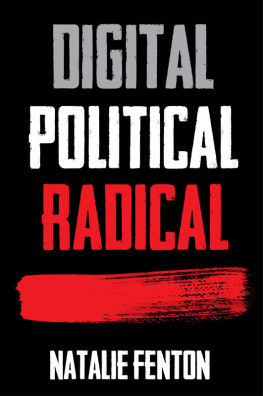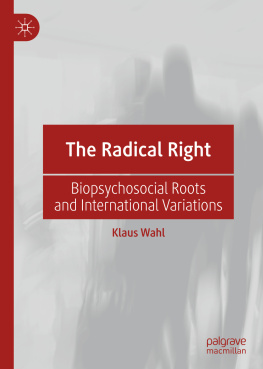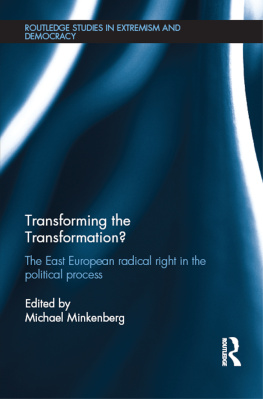Jeremiah Joyce
Jeremiah Joyce was one of the accused in the famous Treason Trials of 1794 which marked the suppression of radical agitation in Britain for the ensuing twenty years. He was a political radical who imbibed the traditions of the 'commonwealthman' and actively campaigned for a more democratic and representative state. Through the early 1790s he acted as the metropolitan political agent for his patron the Earl of Stanhope and he liased between radical groups whilst also distributing radical literature including Tom Paine's Rights of Man . He was one of the very few artisans at the end of the eighteenth century adopted by the literary and scientific intelligentsia and was unique in training to become a Unitarian minister at the age of 23 after serving a seven-year trade apprenticeship and having worked as a journeyman.
This work traces the legacies, traditions and visions of the English Enlightenment as they are expressed through Joyce's life and literary production. It explores the evolution of these traditions against the threatening background of the French revolution and the developing imperatives for education in general, and science education in particular. By tracing the linkages between political, educational, scientific and publishing cultures, it reflects on the issues of late eighteenth century patronage, the literary forms of popular science and the evolution of the metropolitan book trade. In so doing the book recovers the life of a hitherto much neglected science writer and political activist and contributes to the histories of politics, education, science and the developing discipline of book history.
About the Author
John Issitt teaches in the areas of philosophy, history and educational studies for the University of York and the Open University, UK. His research interests are in the history and politics of knowledge. He holds a National Teaching Fellowship through which he develops innovative approaches to learning and supports students in collaborative writing.
Science, Technology and Culture, 1700-1945
Series Editors
David M. Knight
University of Durham
and
Trevor Levere
University of Toronto
Science , Technology and Culture , 1700 - 1945 focuses on the social, cultural, industrial and economic contexts of science and technology from the 'scientific revolution' up to the Second world War. It explores the agricultural and industrial revolutions of the eighteenth century, the coffee-house culture of the Enlightenment, the spread of museums, botanic gardens and expositions in the nineteenth century, to the Franco-Prussian war of 1870, seen as a victory for German science. It also addresses the dependence of society on science and technology in the twentieth century.
Science , Technology and Culture , 1700 - 1945 addresses issues of the interaction of science, technology and culture in the period from 1700 to 1945, at the same time as including new research within the field of the history of science.
Also in this series
Hewett Cottrell Watson
Victorian Plant Ecologist and Evolutionist
Frank N. Egerton
The Genius of Erasmus Darwin
Edited by C.U.M. Smith and Robert Arnott
Science and Dissent in England, 1688 - 1945
Edited by Paul Wood
JEREMIAH JOYCE

: Portrait of the Reverend Jeremiah Joyce. Published 11 Nov. 1794, by B. Crosby. Stationer's Court, Ludgate Street, London. National Portrait Gallery.
Jeremiah Joyce
Radical, Dissenter and Writer
John Issitt
University of York, UK
First published 2006 by Ashgate Publishing
Reissued 2018 by Routledge
2 Park Square, Milton Park, Abingdon, Oxon OX14 4RN
711 Third Avenue, New York, NY 10017, USA
Routledge is an imprint of the Taylor & Francis Group, an informa business
John Issitt 2006
John Issitt has asserted his moral right under the Copyright, Designs and Patents Act, 1988, to be identified as the author of this work.
All rights reserved. No part of this book may be reprinted or reproduced or utilised in any form or by any electronic, mechanical, or other means, now known or hereafter invented, including photocopying and recording, or in any information storage or retrieval system, without permission in writing from the publishers.
A Library of Congress record exists under LC control number: 2006000575
Notice:
Product or corporate names may be trademarks or registered trademarks, and are used only for identification and explanation without intent to infringe.
Publisher's Note
The publisher has gone to great lengths to ensure the quality of this reprint but points out that some imperfections in the original copies may be apparent.
Disclaimer
The publisher has made every effort to trace copyright holders and welcomes correspondence from those they have been unable to contact.
ISBN 13: 978-0-815-38992-7 (hbk)
ISBN 13: 978-1-351-15508-3 (ebk)
| 1. | Portrait of the Reverend Jeremiah Joyce. Published 11 Nov. 1794, by B. Crosby. Stationers Court, Ludgate Street. National Portrait Gallery London. |
I would like to thank Mike Bartholomew, Geoffrey Cantor and David Knight for their help and guidance in the production of this work. I would also like to thank the Library staff of the Dr Williams's Library, Harris Manchester College Oxford, the British Library and the Brotherton Library in Leeds, all of whom have been most helpful over the years.
I would like to thank the subject of this work, Jeremiah Joyce. Joyce, who as the reader is about to find out, is an illusive character and has occupied me in various ways for ten years. Along the way I have learnt quite a lot about him and a great deal about myself, for which I am deeply grateful.
Most importantly, I would also like to thank my wife Patricia, my children Theo and Georgia and my parents Margaret and Ken for all their tolerance and warm support.
- MCO Manchester College Oxford
- DNB Dictionary of National Biography
- PRO, T.S. Public Records Office. Treasurer's Solicitor's Papers
- DWL Dr. Williams's Library
- TUHS Transactions of the Unitarian Historical Society
- BJHS British Journal of the History of Science
In the history of science and technology, we are accustomed to meeting the giants. Galileo, Newton, Franklin, Lavoisier, Humboldt, Brunei, Faraday, Edison, Darwin and Einstein feature over and over, and although their work still invites scholarly scrutiny, there is no problem in finding out facts about them. But we do not learn science from such people as these, and nor did our ancestors. We read children's books, popular writings, and school textbooks; we go to lectures; we look things up in encyclopaedias; and we watch television, where our grandparents had magic-lantern shows. Those who get science across in these ways will mostly never be famous, and yet without them there would have been nobody to encourage and take note of the giants. To understand how science and technology have developed, we need to know more about the sometimes elusive and often forgotten people who have popularised it.

